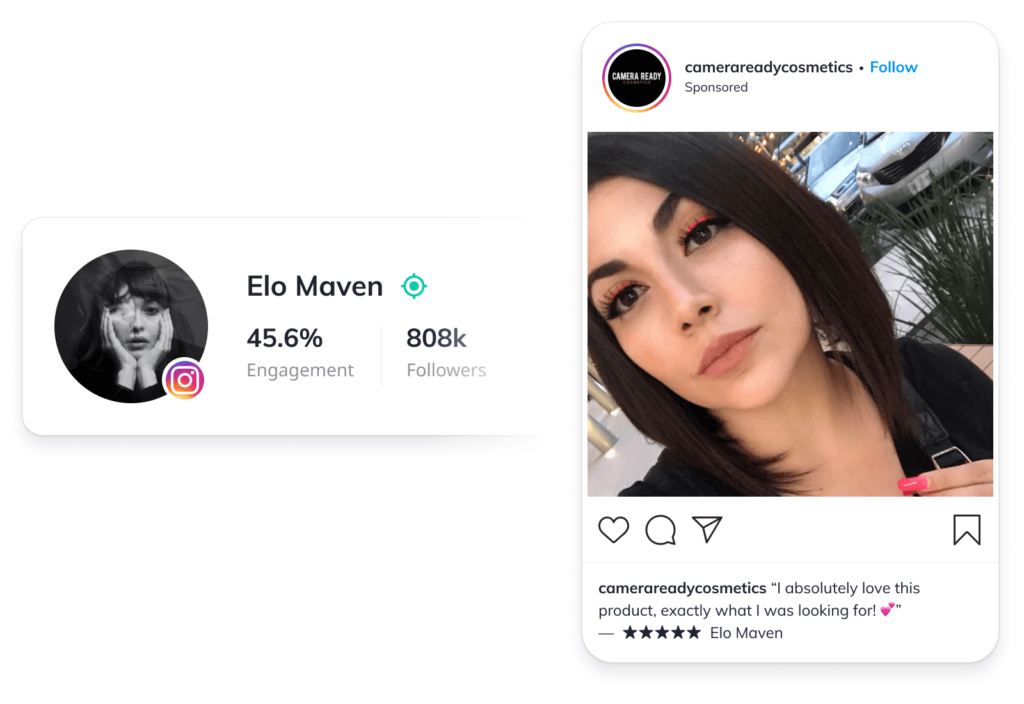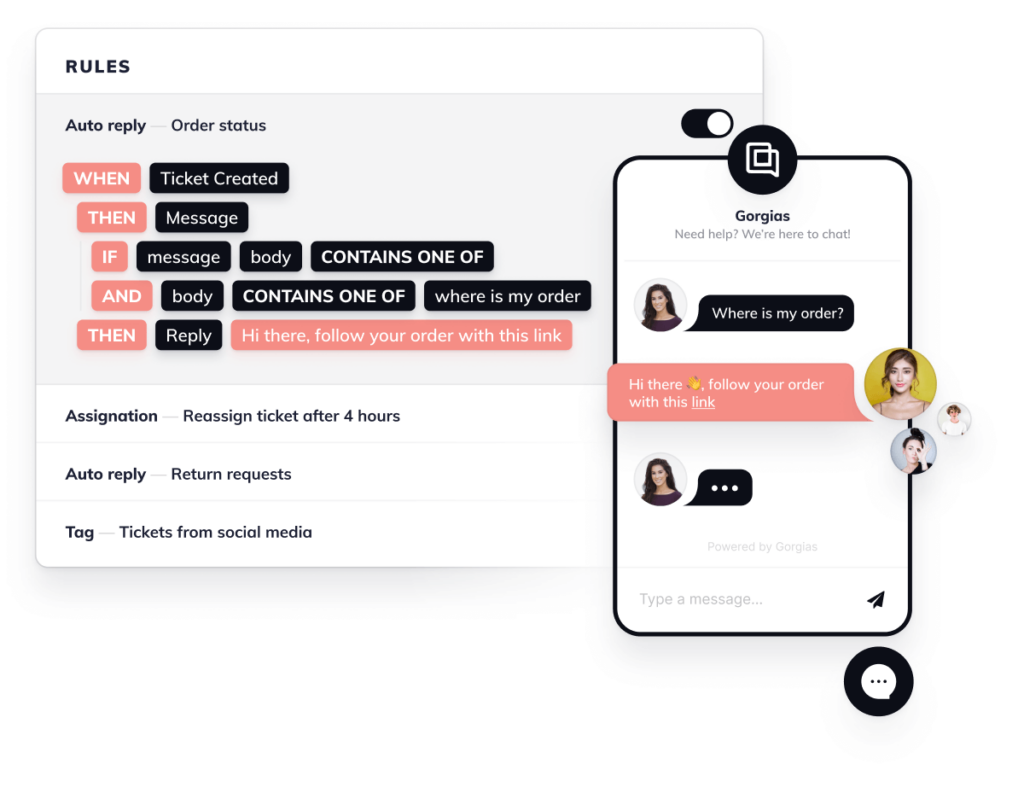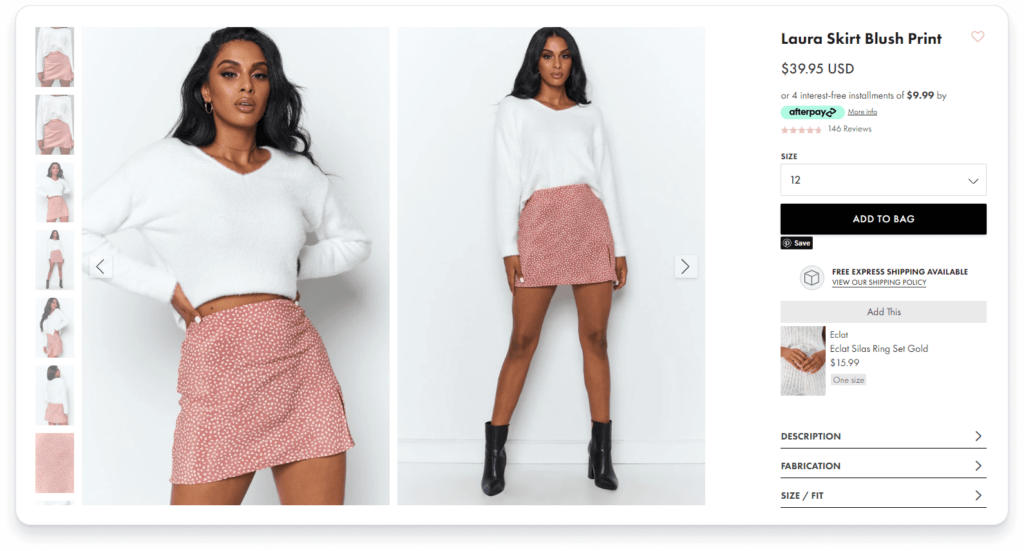The Best Ecommerce Marketing Strategies for BFCM from Shopify Experts
By following these best practices from Shopify experts, ecommerce retailers have the opportunity to convert each valuable visitor into a loyal, paying customer.
Oct 27, 2020 | 21 minute read

Lindsay Kolinsky
Director of Marketing
Introduction
2020 has been a remarkable year for online retail. It’s thought that the exceptional circumstances created by the global Coronavirus pandemic have accelerated the shift towards ecommerce by five years.
And on top of this rapid growth and frenzied activity, our busiest season is approaching. Given the restrictions imposed by social distancing, the bricks and mortar element of BFCM is likely to look and feel fairly different — how will this impact its cyber counterpart?
It’s safe to assume that BFCM will continue to smash all previous records and continue its upward trajectory — but when preparing for sales season in the midst of so much competition, it’s absolutely crucial to ensure your store is firing on all cylinders and fully optimized to take advantage of this annual opportunity.
This guide will equip you with the best techniques and strategies for a successful BFCM, from a range of ecommerce experts in the Shopify ecosystem.
How to prepare your Shopify store for Black Friday with paid ads

Moody Nashawaty
Chief Strategy Officer
MuteSix is a pioneering digital ad agency specializing in turning disruptive brands into household names. Getting your business ready for BFCM? Here’s everything you should know about paid ads, according to their experts.
Shoppers are going bigger, earlier — and their browsing habits are changing, too. Mobile purchasing activity will continue to rise, and window shopping is shifting to Instagram Stories.
During Q4 2018, one-third of both millennials and parents reported that videos created by social media influencers helped them choose what to buy — and that number is expected to grow exponentially for 2020.
The key to adapting your paid ad strategy successfully to a new kind of holiday season lies in understanding current consumer behavior.
Shoppers are seeking affordability, authenticity, and action, meaning a brand’s values should be clearly reflected across all verticals. We are also seeing an increase in receptiveness to new products, so it’s important to have a dynamic marketing strategy in place that sparks a connection with potential customers.

Identify Your Audience
The first step in ensuring an impactful ad strategy is identifying the audience segments you want to reach during the holiday season, keeping in mind these shoppers don’t always fit your brand’s typical demographic.
Seasonal buyers are not the same as your standard customers because they are likely buying for someone else – make sure you build lookalike audiences off of seasonal behavior and not just rely on purchase intent. Targeting the right audience is particularly relevant for Facebook and Instagram.
Choose Channels with the most impact
The channels you use to target your audience will vary by age demographics, however, it’s no secret that social media is becoming the hub of online shopping.
Social media continues to reign as the ultimate source of product discovery for brands. With Facebook and Instagram allowing users to shop directly from their feed, it’s a powerful opportunity for brands to capture and convert shoppers right as they’re scrolling.

About 42% of shoppers said they have made a purchase on social media – either through organic or paid efforts.
One benefit of allocating ad spend to social commerce is that you can use your existing social media channels to drive conversions. Consumers who connect with brands on social media are more loyal and likely to convert. Research shows that 90% of people buy from brands they connect with on social media.
Create Content That Converts
The next step is creating content that will convert, and we’re betting heavily on at-home productions this year. This allows brands to test small scale creative before investing money in larger-scale production. iPhone content also looks and feels more native to a newsfeed compared to highly-produced images typically seen in ads which will resonate more with audiences.
In order to take your content to the next level, we suggest partnering with influencers on TikTok, Instagram, or Youtube. Send products 3-4 weeks before BFCM, this way you’ll have enough time to repurpose content for holiday promos. It’s also important to offer a unique link in order to track revenue.

Begin brainstorming videos, gifs, banners, landing pages, or any other creative now. We also suggest referencing what worked in 2019 and tapping into last year’s top-performing ads to get ahead.
Strategize your spend
Work with your rep to increase daily spend caps on your account. The last thing you want is to be limited on your account the day of a major sale. We recommend spending 15-20% more leading up to the holidays to build your funnel. These will convert when you drive BFCM promotions.
Keep in mind the potential to use sequential messaging to only deliver promo ads to warmer leads – users who have already been exposed to 4x impressions are more likely to visit your store and make a purchase.
The best Black Friday email marketing strategies for your Shopify store

Frank-Anthony Reale
Client & Partner Strategy Manager

Masters of the customer journey, Andzen are lifecycle marketing specialists, with expert ecommerce knowledge. Looking to make the most of your email marketing in the run-up to sales season? Here’s their take on nailing your strategy in advance.
A great Black Friday email promotion can provide an immense boost in leads, exposure, revenue, and loyal customers.
By planning ahead of time, sending the right offers to the right people, and following up with a fantastic post-purchase flow, Black Friday has the potential to be a game-changing sales period for your brand.
Build a warm customer list
A warm customer list is your #1 asset for generating a flood of sales during the BFCM period, and should be the bedrock of your promotions. In 2018, 48% of BFCM sales came from customers who already had a relationship with the brand.
A key focus during the lead up should be building your lists. This will get you ahead of the curve with your own audience of potential customers ready and waiting to hear your sales message. To start building your list, you’ll want to use compelling dynamic pop ups and inline forms to capture your site visitor’s data. The most typical examples are asking shoppers to enter their email address to receive a discount on their next purchase or to sign up to receive exclusive discounts and new product offerings.

Boost your results with hyper segmented campaigns
When it comes to marketing, the key to standing out on Black Friday is hyper-relevance. Generic offers to your entire list simply won’t cut it when people are being bombarded with other discounts and offers.
The first step is segmenting your audience. Send different emails and offers to people based on the specific content, pages, and products they have shown an active interest in. From here you can customize your campaigns with targeted subject lines, imagery, email copy, and offers.
Here are some considerations for deciding what offers people may respond to:
- Have they abandoned a product in their cart?
- Is there a product that’s complementary to one they previously bought?
- Is there a popular upgrade to a product they previously bought?
Using Okendo’s integration with Klaviyo, you can collect valuable customer data through reviews to build more advanced email segments. For our merchant WAG, asking customers for key insights about their dog at the review stage (such as age and purchased flavor) allowed us to build campaigns that aligned with each dog’s specific needs. The highly targeted nature of the campaign led to a 300% increase in Placed Order Rate and a 423% increase in Revenue Per Recipient.

Email your most loyal customers first to ensure they feel valued. This will also allow you to A/B test the subject lines before you email your main list segments.
Turn holiday sales into loyal customers
Once BFCM has died down, you must continue to build a relationship with all your new customers. This will allow you to turn first-time buyers into loyal, repeat customers.
Achieve this through a customized post-purchase flow. Ideally, have this in place before the holiday madness hits, so customers are automatically welcomed and guided to their next desired action.
Setting up a detailed post-purchase flow will allow you to:
- Generate new customer reviews and UGC
- Introduce your customer rewards program
- Encourage customer referrals for the Christmas period
- Cross-sell other related products to boost CLV

According to research, post purchase messaging sees a 217% higher open rate, over 500% higher click rate, and 90% higher revenue per recipient than average email campaigns.
Consider adding product feeds to your emails. For example, if a customer has bought female activewear from your store in the past, a feed can dynamically show them other related products to increase their chances of converting.
Tips for the best customer support on your Shopify store this Black Friday

Chris Lavoie
Technology Partner Manager
Gorgias provides an intuitive ecommerce help desk that helps not only to simplify support, but turn it into an opportunity for growth and improved conversion. Here, they shine some light on the ways you can make sure your Support team is set up for success this BFCM.
A successful BFCM season brings a welcome flood of new sales. The flipside of this uptick in trade? A comparable rise in support tickets…
This year, we need to factor in the compounding effects of the pandemic. Uncertainty around supply chain and delivery times has meant an increase in order-related support tickets.
Retailers should expect an 80-100% increase in support/order volume over a longer period of time (2-3 months) in 2020, because large retail stores in the US are shutting down on Thanksgiving to avoid long lines and crowds.
The key to handling this leap in customer support lies in realistic anticipation and careful prep work. The payoff? It’s not just satisfied customers (although we love to see them). A great support strategy drives sales, increases user’s lifetime value, and converts new leads into loyal customers.
Implement live chats in your omnichannel marketing strategy
The brands who’ll win big this BFCM are those nailing their omnichannel presence. Live chat can be a real asset for smart marketers looking to tailor each stage of their customer journey. As an adaptable communication tool, your live chat should be leveraged tactically at each level of your sales funnel, with a view to maximizing conversions.

If a customer accesses live chat from a product page, for example, use that information to retarget them with additional ads for that item. You can also use live chat interactions late in the sales cycle as a chance to upsell or cross-sell to increase the overall value of each order.
From conversational commerce chat campaigns (which highlight reviews, remove barriers to purchase and offer product specific discounts) through to rapid responses within Messenger, it’s important to make sure your Support team is on hand to help across all sales channels.
Don’t forget to measure the success of each type of interaction to identify the strengths and weaknesses in your approach.
Shorten your response times
BFCM and the ongoing pandemic mean that agents will be answering more tickets than ever in 2020 — but there are things they can do to improve efficiency (without necessarily needing to double the size of the team).
Expect up to 50% of tickets to be order-related (status, returns, exchanges, pre-order etc). This is repetitive but it also means you can automate a lot of the replies to improve efficiency.
- Leverage macros. These premade responses help you respond to your customers faster. Set status, assignee, subject and more.
- Automate replies to the most common customer support questions.
- Use the tags you add to your tickets to identify common support trends. Gorgias enables you to set up rules to auto-tag tickets, making this even easier.
- Auto-assign tickets to the right team — this might not always be Support! Make sure your sales, marketing and social teams are in the helpdesk for easy cross-team collaboration (improving ROAS, comment moderation, and upsell).

A longer average waiting time leads to substantially higher levels of site abandonment, so it’s important that your Support team’s processes are running smoothly and efficiently.
The conversion rate for pre-sale chats or SMS replies in less than 10 minutes stands at an impressive 28%.
Provide a knowledge base
Of course, it’s unrealistic to expect that every customer can be given instant attention. For the times when your audience are keen to solve their own problems, make sure you give them the necessary resources. The majority of customers will default to actively searching for an answer before turning to customer support. Research has shown that up to 91% of shoppers would rather use an online knowledge base if it was easy to access and met all of their requirements.

In addition to increasing customer satisfaction by giving them the tools to help themselves, you’ll also be alleviating some of the pressure on customer support. To ensure success, make sure the answers are at your customers’ finger tips. This can be achieved with a number of different tactics.
Increase the number of online resources on your site. Aim for these to be easily searchable, accurate and up to date at all times. Cover common FAQs (which can be identified from your customer support data) by setting up guides, instructive articles and more information about shipping rules and payment methods. Explore different mediums, from text-based documents through to “How to” video walkthroughs. As long as it’s easy to navigate, then the more comprehensive and detailed your knowledge base is, the better.
How to optimize your Shopify store product detail pages

Andy Homan
Creative Director
Process Creative is a leading, full-service digital agency with an exhaustive knowledge of the Shopify space. What they don’t know about ecommerce user experience isn’t worth knowing. Looking to get your Product Detail Pages into shape ahead of BFCM? Read on…
In the lead up to the holiday season and BFCM, it’s important to ensure that you’ve really optimized your Product Detail Pages (PDPs). Depending on your acquisition strategy, PDPs are often the most important page on your site — particularly at sale time.
Unfortunately, most sites really only do the bare minimum. Crafting a great PDP can take a bit of effort, but — if you’re willing to put in the work — it can give you a great advantage over your competition.
PDPs: What should you be aiming for?
There’s far more to a great PDP than just making sure your call to actions are clear and visible.
It can be helpful to think about your PDP more like a landing page. You want to build up the customer’s understanding of and trust in your product, so that by the bottom of the page all their potential questions or concerns have been addressed and they’ve no reason not to make a purchase.
Think strategically about your product and first consider any potential conversion barriers. Common barriers include:
- Shipping costs
- Delivery times
- Returns policy

Now, think about your specific product. Perhaps people might be concerned about sizing or how it works, or the warranty period. You’ll want to address as many barriers as possible — even if your returns policy isn’t amazing, you’re usually better off being upfront and removing any ambiguity. After all, you’re trying to build trust.
Taking your PDPs to the next level
Consider any features or unique selling points (USPs) and decide on the best way to communicate these — every product has its own narrative. Think carefully about the order in which you display these features, ensuring the most important are towards the top of the page.
Here are some other ideas you may want to consider to enhance your PDP:
- Depending on your product, consider lifestyle images or images of the product in use. This makes it easier for the customer to visualize themselves using the product. Even better if you can incorporate actual users, perhaps from Instagram using a platform like Foursixty.
- Creating product-specific video guides can be a great way to educate customers and give them the confidence they need to make a purchase. Just remember to keep them brief.
- Include a section on the PDP to handle any product-specific FAQs.
- Consider ways to maximize Average Order Value (AOV) with bundles and upsells.
- Limited stock indicators can give a sense of perceived scarcity that tends to work quite well during sale periods.
- Finally, be sure to include product reviews as these really help to boost confidence. Even better if you can include images or video reviews using Okendo.

Keeping things classy
It’s important to consider layout and hierarchy. Try not to simply list all your features as lengthy paragraphs of text. Consider a more engaging editorial or magazine-like layout and use icons, images/diagrams, typographical hierarchy and bullet points.
Including too much information on the PDP can risk overwhelming potential customers. We can minimize this by using a UX principle called “progressive disclosure”, and only display content when it’s contextually relevant. A great example is an accordion or tab-based layout.
Take a look at GOBE site where we’ve executed just a few of the above strategies — and get thinking about how you can take your PDPs to the next level to maximize sales this holiday season.
Top tips for maximizing your Shopify store conversion rate this Black Friday

Matt Abbott
Head of Growth
Swanky is a leading Shopify Plus agency specializing in web design, ecommerce migrations, marketing and growth strategies. Benefit from their years of experience delivering creative digital solutions and innovative customer experiences with these smart, strategic pointers.
With predictions for an unprecedented Black Friday 2020, it’s never been more important to ensure your ecommerce site is fully optimized. In the wake of the pandemic, more consumers than ever before are turning to online retail.
As a result, it’s absolutely imperative that brands do all they can to elevate themselves above the competition, and turn each and every valuable visitor into a satisfied, paying customer.
Align your marketing campaigns with the on-site experience
There’s nothing more frustrating than clicking an ad for 70% off selected products, and then finding yourself on a collection page where everything’s full price.
Leverage dedicated Black Friday landing pages to ensure that users are getting exactly what they expect when they come through to your site. Keep your pages simple, focusing on the offer that attracted them in the first place. This will provide a cohesive cross-channel user experience, increasing the likelihood of turning browsers into buyers.

Platforms like Shogun help you to create optimized landing pages with plenty of aesthetic appeal — with no need for coding experience.
Optimize on-site search
Many shoppers will have a particular type of product in mind that they’re looking to snap-up at a discounted price once the Black Friday sales begin. For these high-intent visitors (who are over 200% more likely to convert), the purchase journey begins at the search bar.

To optimize the search experience and drive sales on your ecommerce store:
- Give your search bar maximum visibility by prioritizing it on both desktop and mobile, using the internationally recognized magnifying glass icon, and formatting it a different color to your site’s background.
- Accommodate spelling errors within search to avoid frustrating customers.
- Speed inputs with a predictive autocomplete tool.
- Create a streamlined UX by offering advanced search filters — don’t make shoppers hunt through endless pages of search results.
Using these site search best practices, you create a space where customers can find what they need quickly, easily and intuitively.
Leverage social proof
97% of shoppers say that product reviews influence their purchase decisions. Showcase high-impact product reviews across your product pages. This helps to establish emotional connections and trust with new customers.
Layered photo reviews help eliminate common worries (e.g. size, fit) and build consumer confidence.

Optimize the checkout process
As traffic and demand increase on your site over BFCM, checkout page optimization is crucial. To provide a positive, streamlined customer experience, your checkout process should be quick, easy and convenient.
Here are some simple tactics to keep in mind as you prepare your ecommerce store for sale season:
- Guide customers through checkout using a visible progress bar. This ensures users know how many stages to expect in the checkout process.
- Keep the checkout screen free of distractions — only show information that users really need to see.
- Minimize the amount of information that users need to fill in — only ask them for essential details.
- Offer multiple payment options for ultimate convenience.
- Prominently display card logos and security seals to bolster confidence.

For a truly optimized checkout process, don’t forget to run A/B/n and multivariate tests to measure the impact of any changes on your given conversion goal.
Shopify Plus strategy: Go with the Flow this Black Friday

Warren Pamukoff
Product Marketing Manager

The platform on which so many of 2020’s BFCM winners will be carried, Shopify Plus leads the way when it comes to cutting edge enterprise-level ecommerce. Known for its powerful automations, in this final chapter, we’ll learn about the opportunities for efficiency that come with Shopify’s Flow feature.
2020 has seen fundamental shifts in how consumers shop, with a McKinsey study reporting the equivalent of 10 years’ worth of ecommerce deliveries completed in just eight weeks. This rapid growth in ecommerce shopping was highlighted by Shopify’s CEO, Tobi Lütke, who recently stated that “The future of retail arrived 10 years early.”
This provides great opportunities for merchants, yet also demands that they offer the best possible experiences. Increasingly, merchants are tapping the power of Shopify Plus Certified Apps, curated to help merchants shine before, during and after sales.
Unfortunately, the very technologies that help save time, effort and cost often bring a challenge of new tasks, learning modules and support tickets. Shopify Flow helps merchants focus on their brand, not tech operations.
Save time, money and effort with Shopify Flow
Shopify Flow is the first ecommerce automation solution that connects your ecommerce systems and tools with seamless integrations. It can save hours of time every day and allows teams to focus on more strategic decision making (such as launching BFCM sales campaigns!).

Since launch, Shopify Flow has:
- Seen over 10,000 unique workflows created
- Saved 22 million hours of work
Shopify Flow’s possibilities are entirely customizable and nearly infinite. Merchants and Partners can share workflows across stores, view and download pre-made templates. The GIF below shows how to integrate an existing workflow.

Good American, a rapidly scaling brand with a fast-growing SKU count and lofty sales targets chose to utilize Shopify Flow to automate its two most pressing concerns.
- Automating inventory publishing: Flow was used to automatically tag products to display as OUT OF STOCK when they were sold out, or to display as LOW STOCK when its quantities dipped below a certain threshold.
- Automate product tagging and filtering: When a new product was added, it may not have contained values and name tags that were ready to post online. Flow automated the process of determining tags, so that they displayed properly when customers viewed them online.
“On other platforms, every time you need to do something, like create custom workflows, you have to build them from scratch. So to have a user-friendly app like Shopify Flow that allows us to start doing much of this ourselves is very encouraging.”
Mehmet Dokumcu
EVP, Digital and Ecommerce
Good American
Get ahead with these six workflow templates for BFCM
Templates provide all you need to begin automating everything from tracking and rewarding your top customers, to creating centralized views of low inventory products.
There’s no need to hire a developer. You can customize our most popular workflows on your own in ten seconds or less.
If you have Shopify Flow installed on your store, you can access and implement the following flows to help with BFCM:
- Notify subscribers when a Launchpad sales event starts
- Message your fulfillment team to prepare for an on-site/curbside pickup
- Add low stock products to a sale collection and hide when out of stock
- Receive a notification when product inventory goes below a certain threshold
- Cancel orders placed by a specific email or IP address
- Automatically cancel high-risk orders, restock items, and send a cancellation email to the customer
Workflows can be powerful for merchants preparing for BFCM 2020, focused on sales and promotions, managing inventory, minimizing fraudulent orders and simplifying delivery options. Make room for growth. Install Shopify Flow and get started today.
Conclusion
The BFCM sales period represents a huge opportunity for those retailers ready to lay solid groundwork.
When it comes to ecommerce, fortune favors the prepared, and when selling on Shopify, you can set yourselves up for success by leaning on the wealth of knowledge and experience the expert ecosystem provides.
Okendo partners with the best-in-class agencies and technology platforms to create seamless customer experiences that help brands drive revenue.
It’s safe to say that 2020 is a year we’ll never forget — take action now to ensure that your Shopify store ends it on an all-time high.
Ready to learn more?